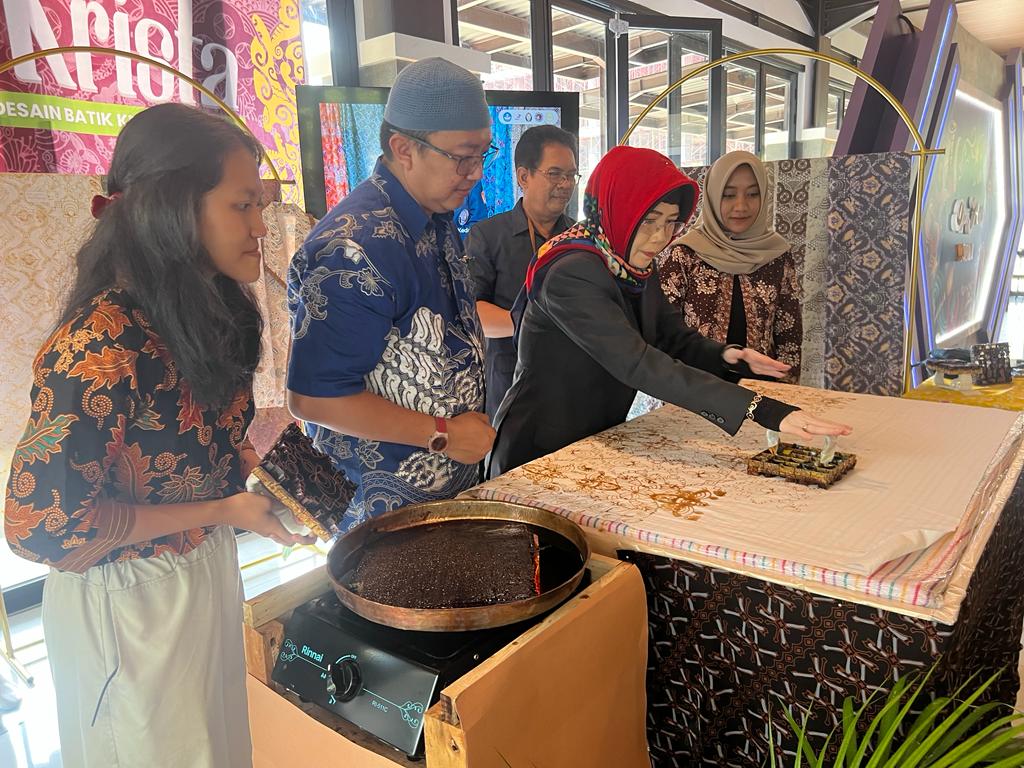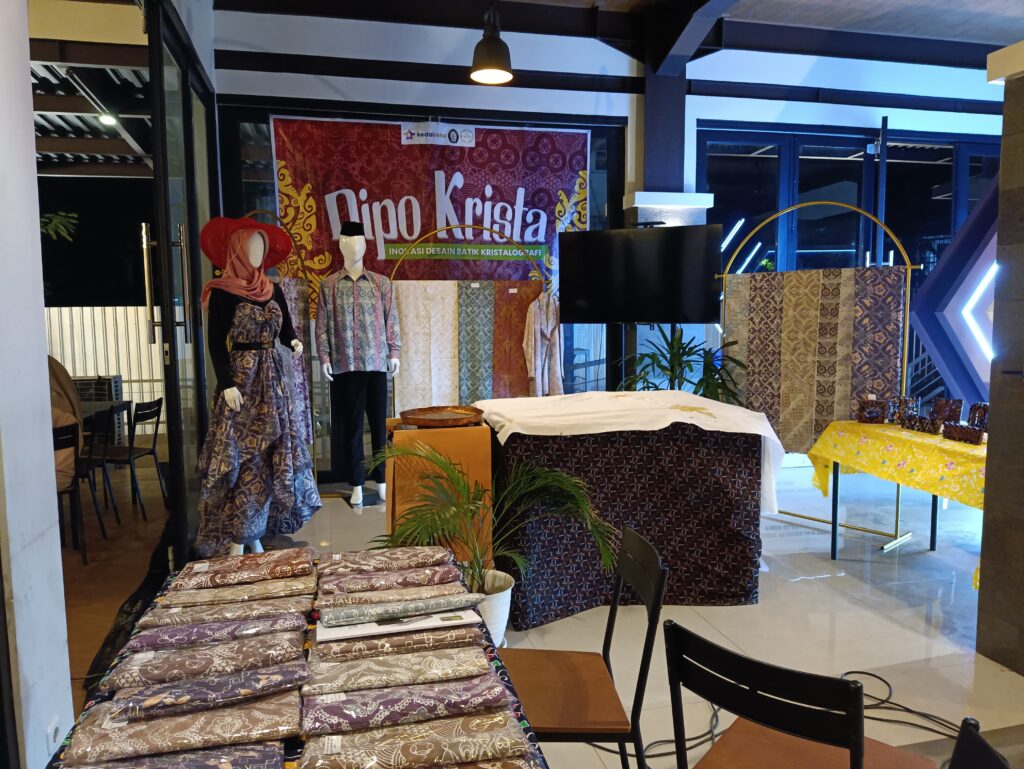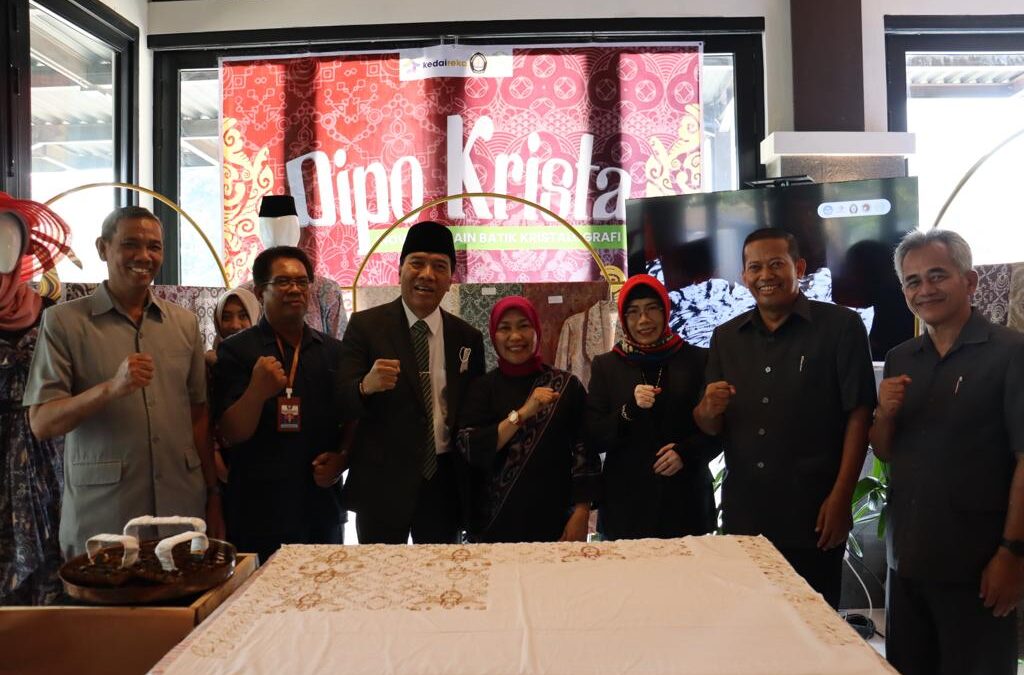fsm.undip.ac.id/ Batik is an important part of Indonesia’s cultural heritage, which continues to evolve over time. One of them is dipokrista batik, which is a brand that is being developed especially in the world of fashion and cultural arts, namely batik mathematical innovation based on the concept of crystallography. Dipokrista was developed through the Matching Fund activities of Kedaireka -FSM Diponegoro university in collaboration with UKSW and Batik Nilo Tirto, with Team Leader Prof. Dr. Widowati, S.Si., M.Si; team members Dr. Drs. Kartono, M.Si (Lecturer dept. mathematics FSM Undip); Dr. Hanna Arini Parhusip (Lecturer dept. Mathematics USKW); Prof. Adi Darmawan, M.Si., Ph.D (Lecturer dept. Chemistry FSM Undip); Dr. Ir. Arianti Ina Restiani H, M.Si (Research institute UKSW); Satriyo Adhy, M.T (Lecturer dept. Informatics FSM Undip); Dwi Cahyo Utomo, Ph.D (Lecturer FEB Undip). This activity also involved 40 students from various faculties, as an implementation of MBKM (Merdeka Belajar-Kampus Merdeka) activities.
Dipokrista batik motifs are produced by combining art and mathematics, while the production process emphasizes green economy principles. The creation of this batik stamp provides a wide selection of attractive batik patterns with one crystallographic canting stamp. Another uniqueness is the use of natural dyes in dipokrista batik, which is not only safe for the skin but also long-lasting. In fact, over time, the color of the batik will become brighter. The process of making dipokrista batik begins with mordanting (removing the fabric from starch by wetting the fabric with alum water and drying it in a place that is not exposed to direct sunlight) then painting until the final process, namely pelorotan.
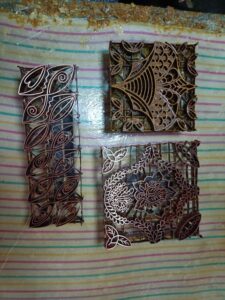
The concept of making dipokrista batik relies on the concept of crystallography in flat plane transformation. Dipokrista has a characteristic that emphasizes the concept of crystallographic batik that has been designed and compiled, where this concept is the implementation of geometric transformations (translation, rotation, and reflection) so that a motif can form an infinite pattern in stamped batik works. During the painting process, it takes place twice using various combinations of canthing cap such as the Crop Sircle theme, KrisMa ( Kristalografi dan Batima), Bihani, Tumpal and also the UNDIPKu theme. The dyes for this batik cloth use natural dyes derived from plants such as leather, wood, leaves and also plant fruits. Coloring is done twice to get the desired color.
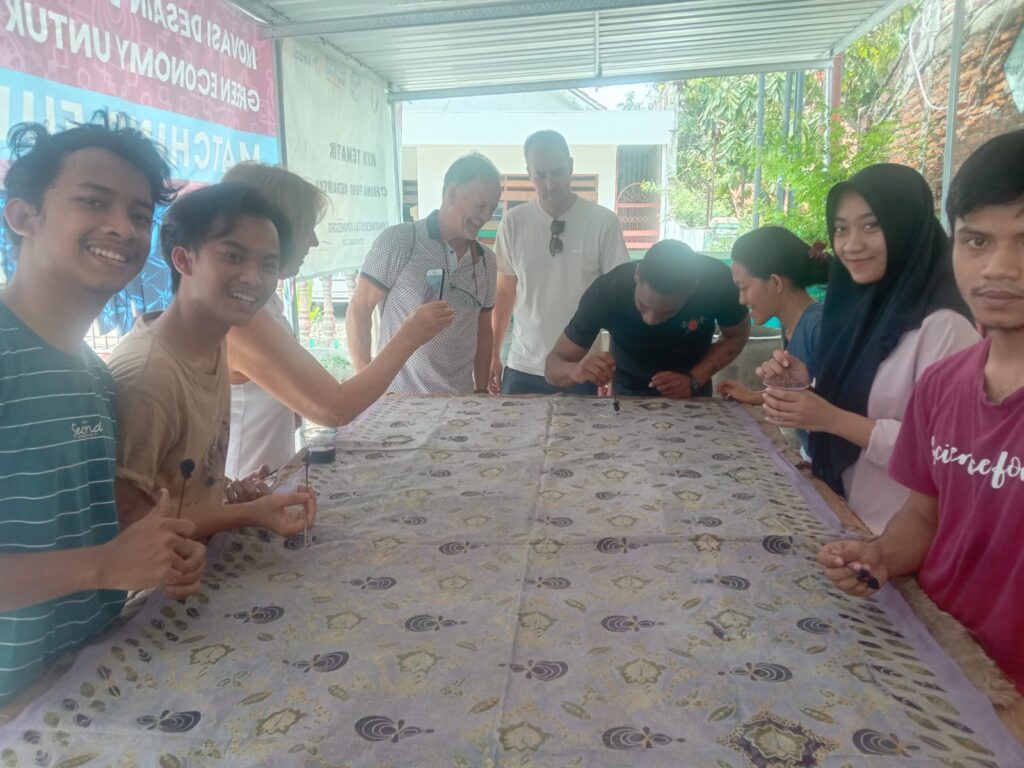
With the innovation of crystallographic design motifs, dipokrista batik provides many batik patterns that are efficient with production costs. The economic approach through the use of natural coloring from natural base materials supports environmental preservation and economic growth. Together with Kedaireka’s Matching Fund at Batik Nilo Tirto provides an extraordinary experience for Undip students. It turns out that mathematics can be applied creatively in the production process of stamped batik. In addition to providing experience for students in applying mathematical principles in batik production, MBKM activities can also provide opportunities for students to convert up to 20sks of relevant courses. (yeye)
